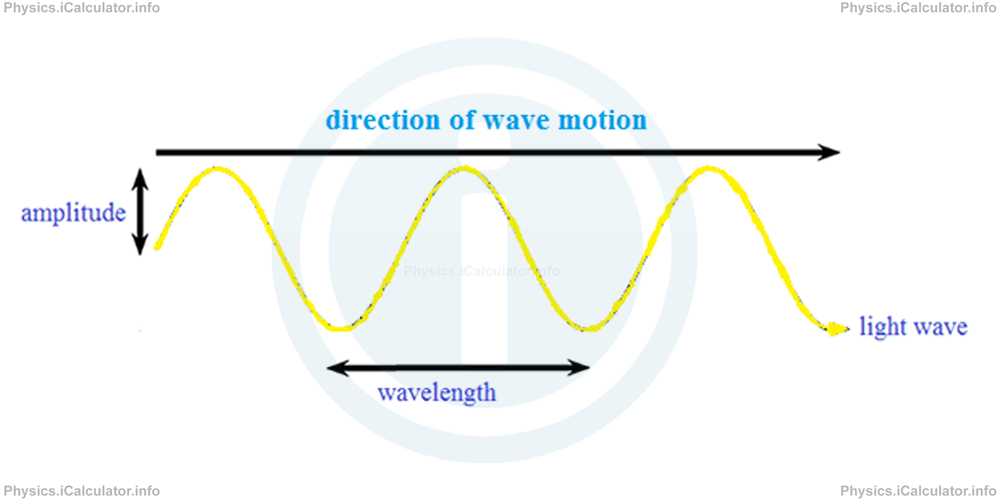Menu
Physics Lesson 12.1.1 - What You Should Already Know about Visible Light
Please provide a rating, it takes seconds and helps us to keep this resource free for all to use
Welcome to our Physics lesson on What You Should Already Know about Visible Light, this is the first lesson of our suite of physics lessons covering the topic of Features of Light, you can find links to the other lessons within this tutorial and access additional physics learning resources below this lesson.
What You Should Already Know about Visible Light
You are not completely unfamiliar with light features because many properties of light are similar or the same as those of waves in general and EM waves in particular, we covered this in detail in our Physics tutorials on Waves, if you have not read through these, we suggest you do so if you are not familiar with the following properties. More specifically, you should already know that:
- Light is an electromagnetic wave that travels at very high speed (in vacuum c = 300 000 km/s = 3 × 108 m/s). Most of its propagation occurs in empty space. Therefore, light does not need any material medium to propagate.
- The speed of light is constant when it travels through the same medium. The speed of light in vacuum is considered as the highest speed in the universe.
- We (humans) are able to see only a short segment of the entire spectrum of EM radiation produced. More precisely, we can see about 1/73 of the spectrum of EM radiation. Thus, we can see EM waves of frequencies ranging from about 4.2 × 1014 Hz to 7.5 × 1014 Hz (the corresponding range of wavelengths is from 4 × 10-7 m to 7 × 10-7 m (400 nm to 700 nm).
- The equation of light waves is the same as for all the other EM waves, i.e. c = λ × fwhere λ is the wavelength (in metres) and f is the frequency (in Hertz).
- Light waves possess all features a wave has, like amplitude, period, frequency, wavelength, speed, energy, power, phase, etc. The approach used to calculate these quantities is similar to those used in other kinds of waves.
- Light is a transverse wave, i.e. its amplitude is perpendicular to the wavelength as shown in the figure below.

- The form of light waves is sinusoidal as all the other transverse waves. This helps us find calculate many light features using the sinusoidal functions.
You have reached the end of Physics lesson 12.1.1 What You Should Already Know about Visible Light. There are 6 lessons in this physics tutorial covering Features of Light, you can access all the lessons from this tutorial below.
More Features of Light Lessons and Learning Resources
Whats next?
Enjoy the "What You Should Already Know about Visible Light" physics lesson? People who liked the "Features of Light lesson found the following resources useful:
- Knowledge Feedback. Helps other - Leave a rating for this knowledge (see below)
- Optics Physics tutorial: Features of Light. Read the Features of Light physics tutorial and build your physics knowledge of Optics
- Optics Revision Notes: Features of Light. Print the notes so you can revise the key points covered in the physics tutorial for Features of Light
- Optics Practice Questions: Features of Light. Test and improve your knowledge of Features of Light with example questins and answers
- Check your calculations for Optics questions with our excellent Optics calculators which contain full equations and calculations clearly displayed line by line. See the Optics Calculators by iCalculator™ below.
- Continuing learning optics - read our next physics tutorial: Reflection of Light
Help others Learning Physics just like you
Please provide a rating, it takes seconds and helps us to keep this resource free for all to use
We hope you found this Physics lesson "Features of Light" useful. If you did it would be great if you could spare the time to rate this physics lesson (simply click on the number of stars that match your assessment of this physics learning aide) and/or share on social media, this helps us identify popular tutorials and calculators and expand our free learning resources to support our users around the world have free access to expand their knowledge of physics and other disciplines.